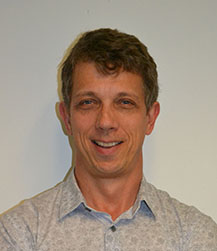
From Toilet to Tap
Posted on: November 2016Chad Staddon, UWE Bristol
From Toilet to Tap?: Wastewater reuse is an idea whose time has surely come
Chad Staddon, Professor of Resource Economics and Policy, University of the West of England
A standard opening gambit at climate change, water and
sustainability conferences is to note that increasing climatic volatility
(warmer average temperatures and increased frequency of exceptional
precipitation events) and population change (population growth plus continued
urbanisation) work together to define a “burgeoning water crisisâ€. I can even measure the number of books on my
shelf that are founded on that premise in linear metres!

Chad Staddon is Professor of Resource Economics and Policy at UWE, Bristol and founder-director of the International Water Security Network. In the course of his 20 year career he has studied water services in Canada, the US, the UK and many European countries. He has published more than 40 scientific papers and books, given more than 100 public lectures and is frequently called upon to comment on relevant government policy. His current research interests lie in the area of better understanding the nature and drivers of urban water demand and the potential for social and economic instruments to drive conservation efforts.
In addition to his UWE, Bristol post, Chad also maintains professional affiliations with the Global Research Institute at the University of North Carolina, Chapel Hill and the School for Geography and Development at the University of Arizona. He is also an active member of the International Water Resources Association, the Royal Geographical Society and sits on the southwest regional committee for the Chartered Institute for Water and Environmental Management, and the Bristol Water Plc Local Engagement Forum.
Chad is the IWSN Project Director, and is also leading the research on urban water demand, under the Urban Water Security strand.
Now I am not saying that the above climatic or population processes are not happening, but what if it were possible to see the potential crisis in another way? Sure, if we insist on seeing water as a ‘one use’ sort of commodity, then we are well on the road to running out of the stuff, especially in the drier, more populous parts of the middle latitudes. However, if we shift from thinking of water as a one use product to something that can potentially be used multiple times, then we are well on the way towards alleviating the crisis as it currently stands. Can we not start to think about ‘circular economies’ in water services such that water used in one location for one purpose might become, with only a modicum of treatment, useful for another purpose somewhere else? Can wastewater reuse become an important way of dealing with looming shortages?
Imagine a system that combines high efficiency fixtures (low flush toilets, low flow taps/showers, etc.) with, where possible, harvested rainwater and recycled water. Rather than relying solely on the mains water supply, such systems could be water sourced from building-scale or community-scale collection networks such as greywater recycling or rainwater harvesting. Just as decentralised energy taps into local sources of electricity (through solar or wind generation), water reuse networks would tap into suitable sources of rainwater and treated wastewater and match them to demand for flushing and other purposes such as irrigation. You could flush your toilet with water piped from your roof, or the local school’s roof, for example – saving both potable water and the energy used to treat it.
Imagine further that remaining mains water usage finds its way to a reprocessing centre that offers the option of feeding the treated effluent back into the service network – achieving a “toilet to tap†system. Sound bizarre or off-putting? Well, several cities around the world already have either direct potable wastewater reuse (where treated effluent goes straight back to the drinking water treatment plant – “step one†of the conventional process) or indirect potable reuse (where treated effluent is mixed with either surface water or ground water before being once again abstracted at a drinking water treatment works. Direct potable reuse (DPR) has long been in effect in Windhoek, Namibia (since the late 1960s) and Singapore (since the 1990s), and has more recently been taken up in some surprising places, such as the cities of Brownwood and Wichita Falls, Texas. Indirect potable reuse (IPR) is in effect in many more cities around the world including Beijing, China, Tucson, Arizona, Orange County, California and Tel Aviv, Israel. There is even a limited IPR scheme in operation in the Thames Basin, operated by Thames Water – the North London Artificial Recharge Scheme (NLARS).
With Reverse Osmosis water treatment continuing to fall in operational cost the technical and cost barriers to such schemes are starting to disappear, leaving the potential for consumer disgust – the “yuck factor†to play a large role in inhibiting roll-out. However, even in otherwise conservative parts of the world, like rural Texas, the “yuck factor†has proven relatively easy to manage. No doubt persistent drought has helped local communities get over any squeamishness, but good stakeholder engagement has also been important. “In West Texas we have a better appreciation of water than other parts of the country,†says John Grant, Manager of the Colorado River Municipal Water District (CRMWD), “we still had some who were concerned, but most people were OK with it once we provided them with information. We held public meetings, we did news releases, we did television and radio, and we went around to civic clubs and did talks.†[1]
Industrial scale DPR and IPR schemes can also provide additional benefits. Currently, conventional non-reuse wastewater treatment plants (WWTPs) are integrating technologies for biogas recovery, solar and wind power generation that are rendering many WWTPs energy-positive – they generate more energy than they need to operate. At Avonmouth Wastewater Treatment Plant, located near Bristol in the west of England, biogas electricity generation is currently at about 72,000 KWh per day – enough to power about 4000 average UK homes for a day.[2] Of course not all of that electricity is available for distribution into the grid – the WWTP needs much of it, but imagine if all WWTPs up and down the country had such facilities: our energy security would be markedly improved.
It remains true that climate change plus population change means ever greater pressure on water resources – the standard conference paper opening gambit is true. But there is much that can be done, and is being done, to help us to use water resources more effectively and efficiently.
[1]Martin, L. 2014, “Texas Leads The Way With First Direct Potable Reuse Facilities In U.S.â€, Water Online, Sept. 16, 2014 [online]
[2]Based on a field visit to Avonmouth WWTP on October 10, 2016



